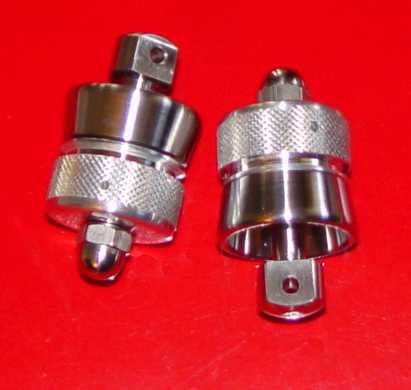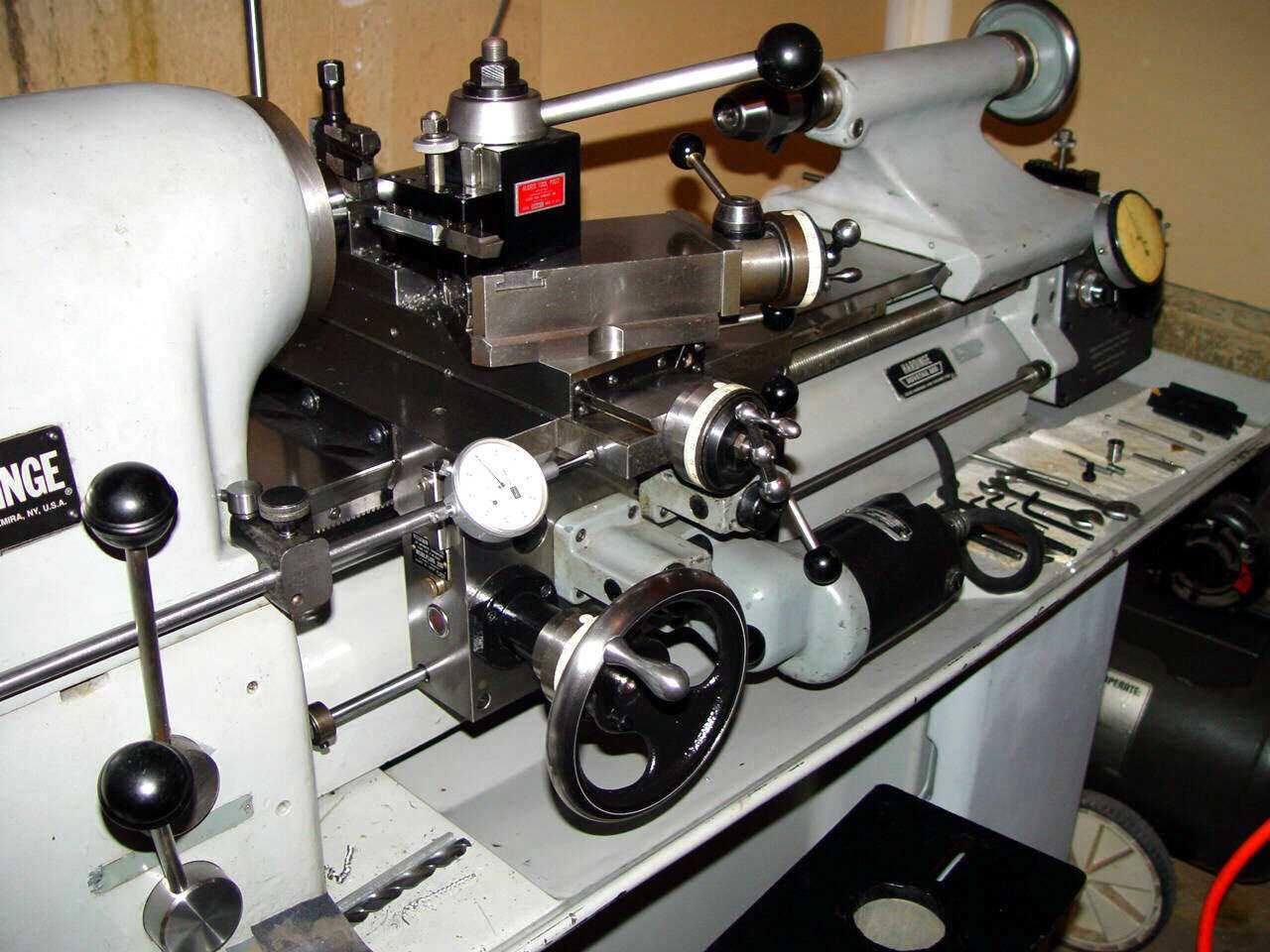All sorts of radio restorations require the use of a good lathe to make lost or unavailable parts. One example below is of a pair of 1" diameter fastener assemblies intended to duplicate an AN/ART-13 transmitter shock mount. These are installed on the front of the mount to retain the transmitter solidly to the aircraft. (See B-29 Corner for the original mounts.) The small holes in the knurled part are for safety wire. Each of these pieces (except the acorn nut) was carved out of a piece of aluminum or stainless bar on the lathe.

Another example below is a 1.312" long thumbscrew used to hold down a telegraph key to the fold-down plywood shelf on the BC-474 field radio. This screw is often missing on this set. A photo of an original is on the left side of the frame. These were made from stainless steel to provide the same color and look of the original plated brass without the poor wear and fragility of the original electroless nickel plate. (A detailed dimensional sketch of this thumbscrew is located here.)
As in any human pursuit of excellence, there are always arguments among machinists over which lathe is the best one, but for a small (11" diameter swing) machine, the HLV-H is a fairly decent competitor. Their value holds well, they are very little changed since about 1960 (this one is an ancient 1965 model), but wear items are reasonable and easily changed out. I understand that Hardinge has updated this model with computer controlled threading (~$85K was the price I saw for a new one), but support for the older HLV-H appears to be solid for the foreseeable future.

For a prototype shop, they are extremely useful - they can be used as a watchmakers lathe for extremely tiny parts as well as large ones. You can't do any serious "hogging", because it was designed for extreme precision in making parts (spindle runout is guaranteed to be less than .000025" - that's 25 millionths of an inch) but for the activities at AAFRadio it is just perfect. Extreme measures were designed into the lathe to reduce vibration, including its 2,200 lb weight and a drive motor in a 5 hp frame size that only produces 1 hp, with a rotor balanced to .0005 ounce. The result is a mirror surface finish from the very first cut to the last and is a huge pleasure to use. My wife occasionally comes out to the shop when I'm running it and remarks, "You've got that silly grin on your face again..."